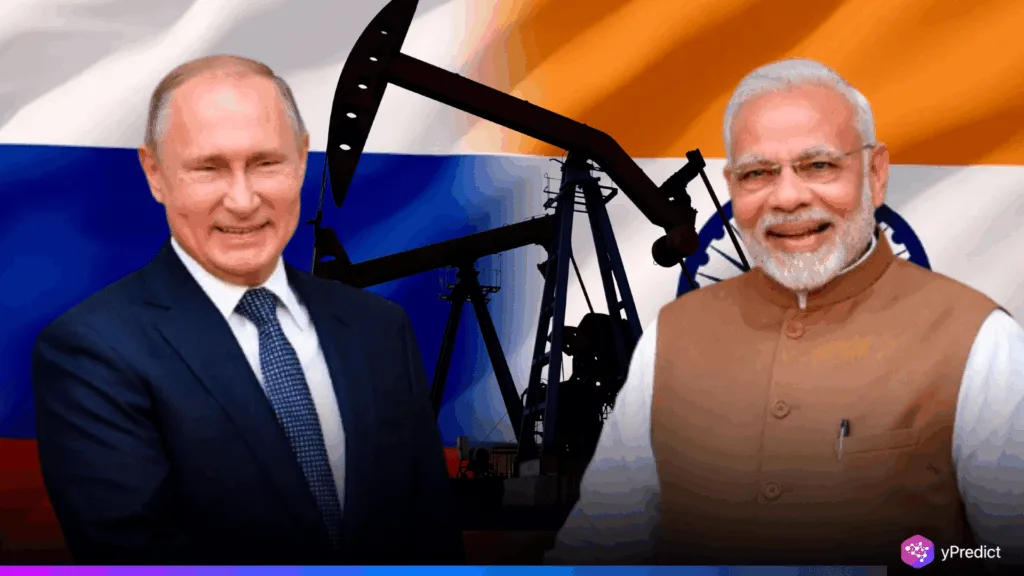
India’s daily Russian oil imports increased to 2 million barrels in August. It accounts for approximately 38% of the country’s total crude consumption. This sharp rise affects oil volumes as well as supplier dynamics.
Additionally, India continues to be economically motivated to source oil. There was no official mandate that altered procurement, and refiners are still concentrating on supply and margins. Therefore, this development is crucial for evaluating the pressures of global trade and India’s energy policy.
Are Russian Oil Imports Reshaping India’s Trade Balance?
India still needs reasonably priced crude. Russian contributions now account for a significant amount of India’s energy basket, with 2 million barrels per day. These oil volumes highlight economic choices over geopolitical trends at a time when US tariffs are on the horizon. Refiners also stick with Russia, citing logistics and cost rather than orders.
Rising Crude Share Shifts India’s Sourcing Pattern
Saudi Arabian and Iraqi imports significantly decreased. Alternative sources decreased as Russian oil volumes increased, reflecting changes in trade. Furthermore, Russian oil’s crude percentage has risen sharply from less than 1% before 2022 to roughly 38%. This shift poses tactical issues. Furthermore, India is looking for new suppliers in Latin America, West Africa, and the US. This is an effort to maintain energy security and manage risks.
Russian Oil Imports Set Stage for Future Risks
A strategic shift can be seen in this increase in crude share. Refiners warn that if sanctions tighten or discounts end, the trend may stall. However, affordability and consistent supply are still the main priorities for the time being. If geopolitics worsen, future changes might include stronger domestic alternatives or more balanced sourcing.
Will India’s Crude Share Strategy Secure an Energy Future?
India’s energy policy is based on dollars, not diplomacy. Increased imports of Russian oil are a result of practical decisions rather than political alignment. Additionally, alternative supplies withdrew as the crude share of Russian oil increased to 38%. However, Indian refineries continued to operate on the same logic.
India shows that energy security is more important than pressure by luring oil volumes based on price rather than strength. Diversification may become more popular in the future, but for the time being, economics is in charge.







